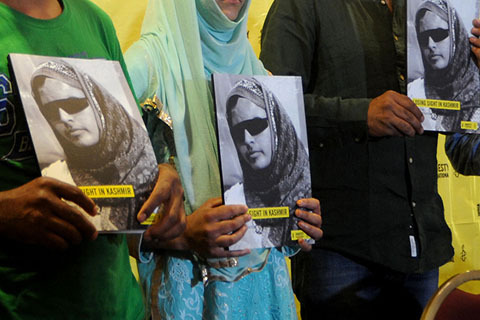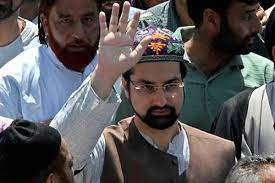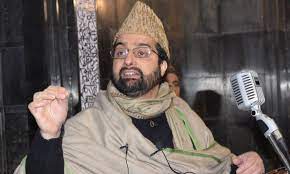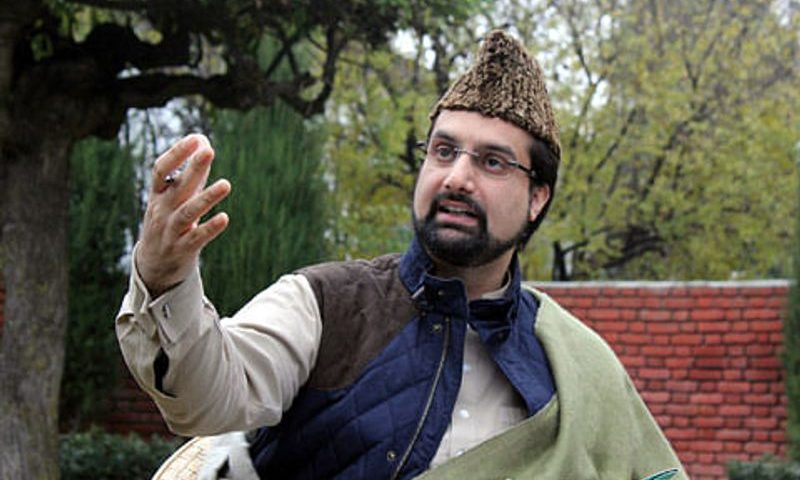For them, the world is dark. It’s been almost a year since they lost their vision to deadly pellets fired ‘indiscriminately’ by government forces during the 2016 uprising in Kashmir.
Aged between nine to 20 years, the pellet victims are in the midst of a dangerous conundrum: fast losing their memory due to psychological trauma they have gone through in the past more than a year.
The victims, including girls, have remained confined to the four walls of their homes since the pellets snatched their eyesight. They say they only leave their homes when they are supposed to see a doctor with the sole hope of regaining their vision, somehow.
“I was inside my house when government forces fired pellets at me last year. They should have killed me there. I am not able to see properly and have become fully dependent on others,” said Shabroza Mir, 18, a resident of Rohmo village in Pulwama district. “I was preparing for my class 10 exams when the forces barged into our house and fired a volley of pellets. My world turned dark for me there and then.”
Despite a few surgeries, Shabroza couldn’t regain her eyesight due to severe damage caused to her cornea by the ‘deadly’ pellets.
Speaking at the launch of a report on pellet shotguns released by the Amnesty International here, Shabroza said that she can’t even cry as it pains her eyes. “I wanted to pursue my studies, but pellets snatched my world. What has added to my pain is that I am facing memory a loss now. I hardly remember things. Such is the level of trauma that I even forget to take my medicines.”
She boldly said that the depression she is facing is due to the worry of losing her vision.
Joining her on the dais was Manzoor Ahmed whose right eye has been declared “dead” by the doctors.
“Being elder in my family, I would go to a local bakery shop and earn my livelihood there. On that fateful day, last year, the government forces barged into our home and smashed windowpanes. When the forces tried to misbehave with female members in my family, we protested. In return, I received a full cartridge of pellets on my face,” Ahmed said.
In his early ‘20s, Manzoor said that he fell unconscious a kilometer away from his house after being chased by the forces. “I have only one job: to think, think and think about my lost vision. My life is hell now. No operation has worked and no medicine is working. Life is very tough for us,” he said.
The visibly-upset Manzoor said that they are being only called by some NGOs for photo-shoots and interviews. “This is our life now: to narrate what has happened to us,” he said.
Danish Rajab Jhat, a pellet victim from Rainawari area of Downtown Srinagar, said that even tears have dried up in his eyes.
Danish received a full burst of pellets during clashes between protestors and government forces last year. “I was operated upon thrice, but to no avail. I have become completely dependent. Everything in front of me is dark, rather completely dark. I can’t see. My both eyes were hit by pellets. Nothing is working for me,” said the 24-year-old youth, as he protects his eyes from the direct sunlight with his hands.
Senior Campaigner at the Amnesty International India, Zahoor Wani said that in some cases, those injured by pellet firing still have the metal pellets in their skulls or near their eyes. “Doctors are afraid to remove the pellets fearing that it will affect their eyesight, but they are not sure what long-term effects it would have,” he said.
He said that people injured by pellets have faced serious physical and mental health issues, including symptoms of psychological trauma.
“School and university students hit in the eyes told us that they continue to have learning difficulties. Several victims who were the primary breadwinners for their families fear they will not be able to work any longer,” Wani said. “Many have not regained their eyesight despite repeated surgeries.”
Meanwhile, Calling for “immediate ban” on use of pellet guns in Kashmir, the Amnesty International India, a human rights watchdog, on Wednesday advocated a trial in the civilian courts for police and paramilitary personnel involved in disproportionate use of the ‘deadly’ ammunition. It also said that the trail of destruction caused by pellet guns is the “human cost of the government’s heavy-handed crackdown in Kashmir.”
Addressing a press conference here, Aakar Patel, executive director of the Amnesty International India, said that eyesight of 88 people was damaged by the metal pellets fired from pump-action shotguns used by the police and paramilitary Central Reserve Police Force between 2014 and 2017.
The presser was organised to release a report titled “Losing sight in Kashmir—the impact of pellet-firing shotguns.”
“World knows it as a shotgun which is used to kill birds. Pellets once fired have no control and they split. Those who fire pellets also get injured. 16 forces personnel got injured in Kashmir while firing pellets,” Patel said in his inaugural speech at the press conference.
“We believe that stone-pelting should not happen, but that doesn’t mean that pellets will be used if it happens,” he said.
Kashmir, he said, is the only place where pellets are used as a crowd control measure.
The report reads that in J&K, the police state that cartridges of pellet guns commonly used contain 500 pellets which resemble ball bearings. “There is no way to control the trajectory or direction of the pellets whose effects are therefore indiscriminate,” it reads.
The report strongly advocates that the J&K government must initiate prompt, independent and impartial civilian criminal investigations into all incidents where the use of pellet-firing led to deaths or serious injuries.
“This should be done to establish whether arbitrary or excessive force was used and where sufficient evident is found, prosecute those suspected for responsibility in civilian courts,” the report states.
It says that the pellets should be immediately stopped. “(Central and State governments) provide relevant training on crowd control measures and the use of force and firearms to security forces as laid out in the UN Basic Principles on the use of force and firearms by law enforcement officials and UN code of conduct for law enforcement officials,” the report reads.
The report states that the government must provide full compensation in line with the international standards to those injured by the pellet-firing as well as the families of those killed.
“This must include adequate compensation and rehabilitation including any medical and psychological care that may be needed,” the report states.
Speaking on the occasion, senior campaigner at the Amnesty International India, Zahoor Wani said that during the course of research, it was found that FIRs were registered against victims in various police stations instead of those who fired pellets.
“We have seen only one case where FIR was lodged against police,” Wani said. He said that the victims are in the age group of nine to 65.
“Of the total 88 victims hit by pellets in eyes, 31 sustained pellet injury in their both eyes. Among the victims, 14 were female, who were shot by pellets inside their homes,” Wani said. “Pellets have rendered two victims completely blind.”
Aakar Patel said in his I-Day speech, Prime Minister Narendera Modi said that change in Kashmir will not come from guns and abuses—“na goli say, na gali say.” “If the government truly means this, they must end the use of pellet-firing which has caused immense suffering in Kashmir,” he said.
The report further states that many victims show symptoms of psychological trauma.
“And all of them face everyday struggles: of dealing with the darkness they say has descended on their lives, of having to let go of simple pleasures, and of preparing for difficult future. This is the human cost of the government’s heavy-handed crackdown in Kashmir,” the report reads.
It states that pellet-firing has also injured the police and armed forces. “Information obtained through right to information application suggests that these injuries have indeed occurred. The Health department of the government of J&K in response to the RTI application submitted a list of persons treated for injuries in government hospitals in six blocks in Kupwara district in 2016,” the report reads. “The list of 648 people includes the names of 16 men indentified as being members of the J&K police who suffered various forms of injuries caused by pellets.”
The report states that the Amnesty International India wrote to J&K police and central reserve police force seeking information on whether any of their personnel had been injured by pellets. “No responses were received,” the report reads.






